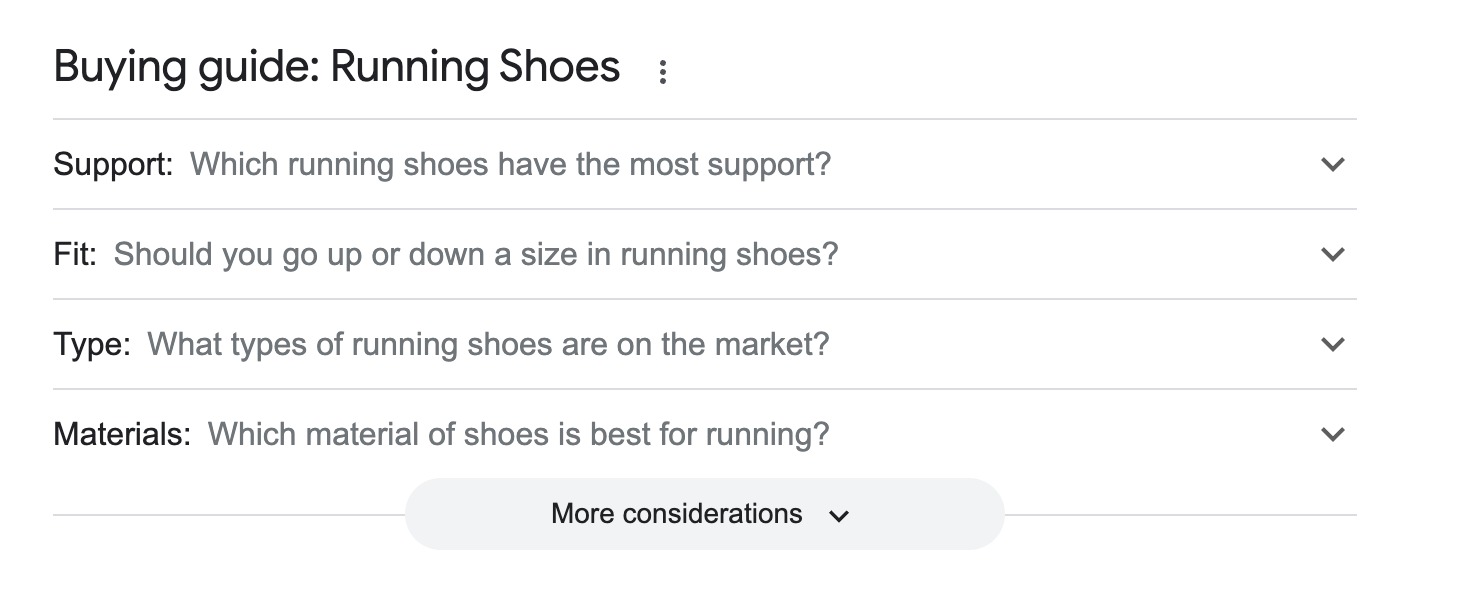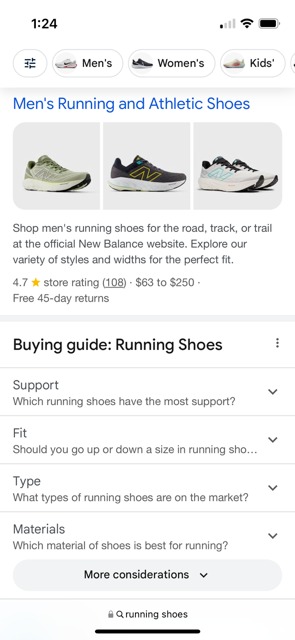Buying guides are lists of expandable questions that appear in search results. They offer detailed comparisons of product features, prices, and other key factors to help consumers make informed purchasing decisions.
Here’s an example of what that might look like on desktop results:

And mobile:

As a default, there are four questions in the buying guide with the option to expand and see more. Buying Guides are featured on both desktop and mobile.
How to Get Your Products Featured in a Buying Guide
Here are some steps you can take to help give your content a better chance of being featured in a buying guide:
- Create detailed, well-researched content offering buying guides with technical specifications, pros and cons, price comparisons, FAQs, and user reviews.
- Optimize your product listing pages to the purchase intent of users using keywords like "best," "reviews," and "comparison."
- Implement the “Guide” structured data using Schema.org's markups. Other schema markups that could help search engines understand your products include Product, Review, and AggregateRating.
- Regularly update your buying guides to reflect the latest products and market trends to maintain freshness and relevance.
How Semrush Collects Data About Buying Guides SERP Features
- When we scan a keyword’s SERP, we identify whether or not a buying guide is present anywhere on the results page.
- If a buying guide is present on the results page, but the domain you entered doesn’t appear for that buying guide, its icon will appear gray in the SERP Features column.
- If the queried domain appears in the buying guide, you’ll see a stand-alone blue icon listed in the Positions column. This will allow you to see estimated traffic coming from the SERP feature. You’ll also see another row in the same table with the URL’s organic ranking and estimated traffic.